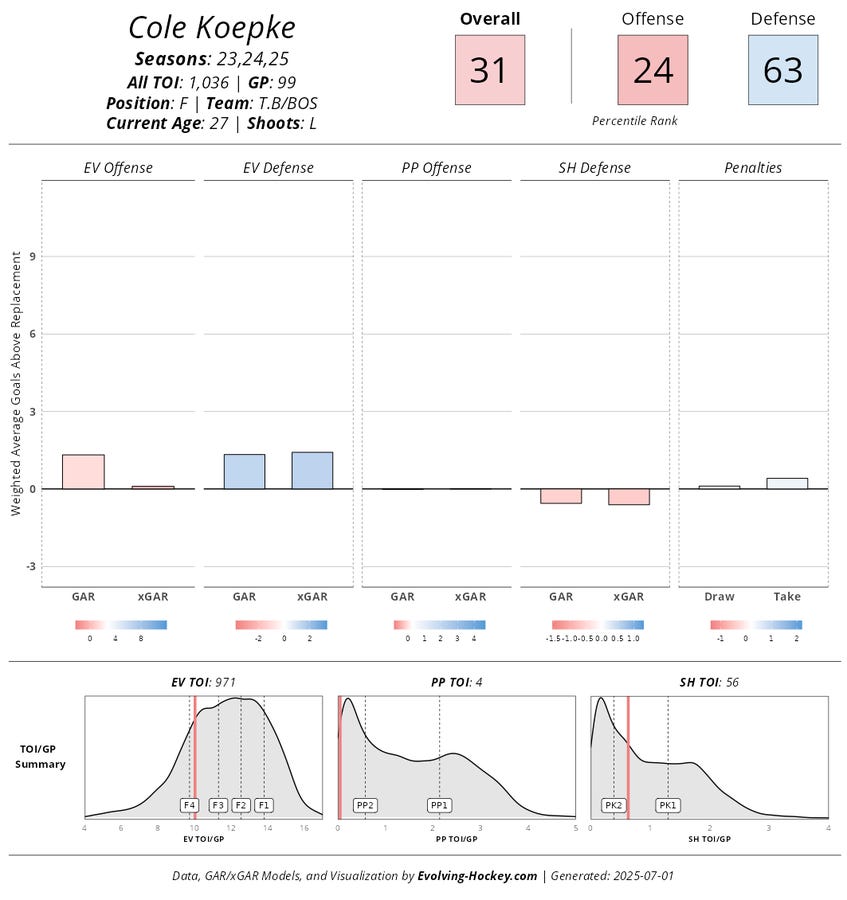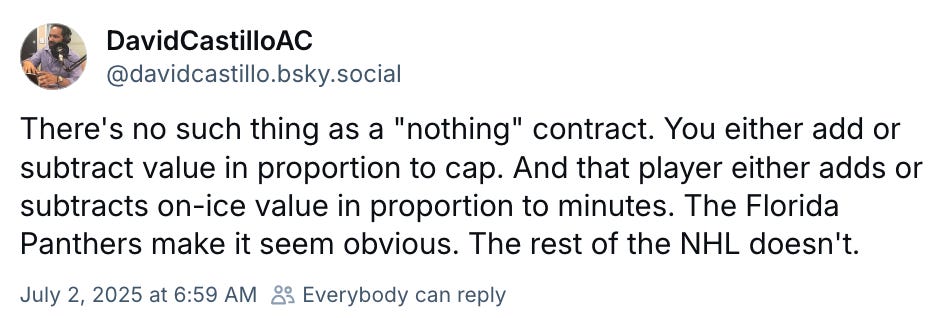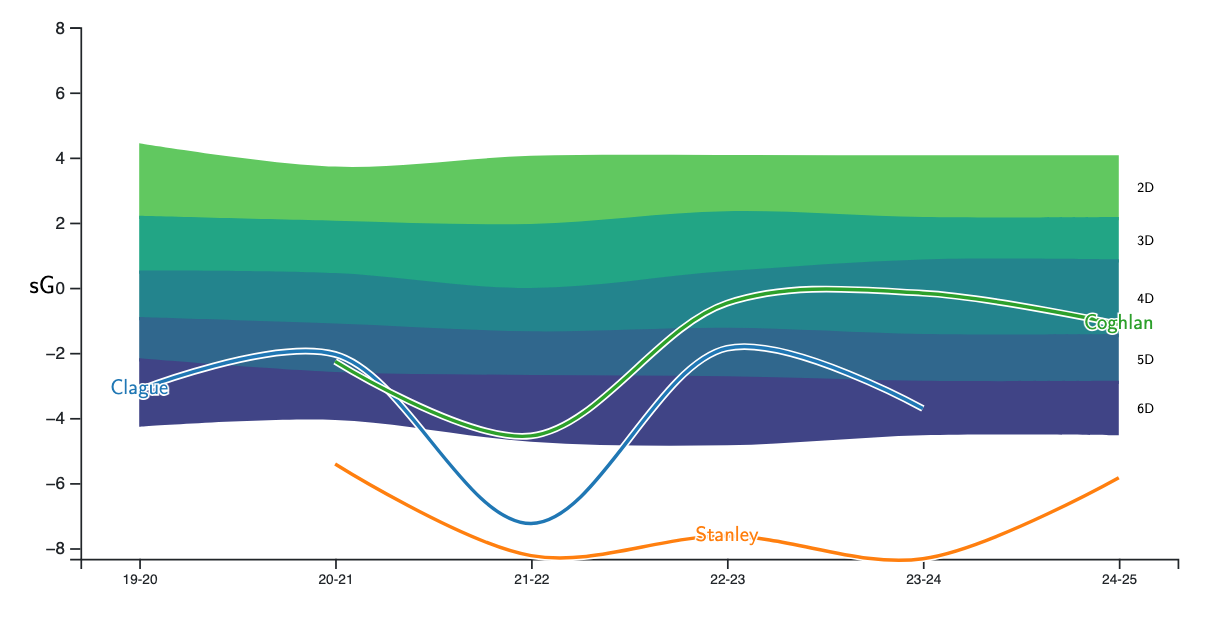Kevin Cheveldayoff didn’t make any big moves, but the team right now looks quite a bit different from last year already.
The team added some organizational depth pieces that may or may not be helpful, and may or may not play in the NHL.
I’ll break down these players briefly and where the Winnipeg Jets stand after day one of the NHL’s free agent “frenzy.” That said, I left my laptop at work and so I did most of this article on the family computer and my cellphone.
So, I request forgiveness that this article is missing some of the requested research questions that I’ll add in the next article. I also request forgiveness that this article will not be edited, so there will be more grammatical and such errors as this was just a quick rant.
The series thus far
Winnipeg Jets 2024-25 Season and Playoffs Review
In our first post, I reviewed the Jets’ performance as a team in both the regular season and playoffs. I looked at team-level results and the general performance of the roster and its components.The case for and against Winnipeg Jets extending Nikolaj Ehlers
In our second post, I took a deep dive into Nikolaj Ehlers—Kevin Cheveldayoff’s biggest offseason question.Should the Winnipeg Jets actually sign Jonathan Toews
I then pivoted in our third post, covering some trending news: the idea of signing Jonathan Toews for the 2025–26 season, and what that might realistically look like.Which Winnipeg Jets’ free agents are worth keeping
I took a look at the value the Jets received from their free agents, how they project to perform, and made some suggestions on whether or not they’re worth keeping based on their impact.If I were Kevin Cheveldayoff… (Part 1: Needs)
I took stock of the team’s current strengths and weaknesses and began building a plan for maximizing Winnipeg’s contention window.Who is Sascha Boumedienne and update on Jets prospect cupboards
A deep dive on Sascha Boumedienne with an analytical look at the Manitoba Moose and the Winnipeg Jets’ prospect cupboards.Draft day two and another update on Jets prospect cupboards
A deep dive on Sascha Boumedienne with an analytical look at the Manitoba Moose and the Winnipeg Jets’ prospect cupboards.If I were Kevin Cheveldayoff... (Part 2: Free Agency)
A preview on free agency with who the Jets are, what they need, and possible options to help the team.
Quick Stats Primer
We’re focusing on “what I would do,” which means we’re not focusing on what the Winnipeg Jets have done.
This also means that we’ll focus on predictive metrics over descriptive metrics. We only care about what players have done provided it is a reasonable assumption that they will likely continue doing so.
Evolving-Hockey.com has two total value metrics: GAR and xGAR. Oversimplified…
GAR is a game score or box score stat. It takes all the things you’d see on a game sheet (goals, assists, blocks, hits, giveaways, takeaways, penalties, penalties drawn, goals for and against, shots for and against, etc.) to approximate the impact a player had on the games they played.
xGAR is more of a super advanced plus-minus, taking the expected goal differential (a shot +/- where shots are weighted relative to shot quality) a player has while on the ice. It is adjusted for many usage factors (linemates, line matching, etc.) and then adds goalie talent (i.e., Goalie GAR) and shooting/finishing talent.
These models are both explicitly and intentionally focused on descriptive value. They tell you how a player did in the context of their season. A predictive model is more about what we expect a player to do moving forward in any particular situation.
I have blended the individual aspects of GAR and xGAR (even strength offense, even strength defense, power play offense, short-handed defense, penalty drawing, and penalty taking) in a manner that increases the predictive value of these models. I should note that the overall values on Evolving-Hockey’s player cards are fairly close to my wGAR values.
That said, synthetic goals—sG from HockeyViz.com—is explicitly and intentionally focused on predictive value, and so it’s generally better at telling you how a player will play in the future. sG is quite complex, but it also uses math to isolate a player’s performance in key areas, like their influence on shot quantity, quality, finishing, setting, and ability to transition.
Got it? Good.
The Signings
LW, Cole Koepke, 1x $1M
Cole Koepke was a decent scorer in the American Hockey League. In his final season for the Syracuse Crunch, Koepke was the second highest point scorer on his team.
In the NHL he’s produced 1.18 5v5 points per hour, which is slightly above average for a depth or 4th line player. He has been an average finisher with above average shot volume. Due to that, he’s actually produced a solid goal per hour clip.
Despite his production, his overall offensive impact has been a weakness. Not bad for a depth forward, but a weakness nonetheless. While the sample size is quite small, Koepke has predominately played a low-event, no offense for anyone, style game.
The good news is that he’s won those minutes, which makes him as good as you could hope for a depth forward fighting for a roster spot. There’s always a chance with low minute, low event players don’t sustain their success.
But, if you want a low risk shot at a player that could help you, one that out chances the opponent is the way to go.
Speaking of which…
RW, Tanner Pearson, 1x $1M
A player who loses those minutes because he’s too slow of a skater for the NHL is not the way to go.
The ** in the image above, beside the EV Defense label, is saying that the graph actually shifted the y-axis from the default. In other words, Tanner Pearson’s defense is so bad they had to custom adjust the graph to fit it.
Here’s the thing, contracts like this can easily be buried in the AHL. There’s very little cap risk here and performance risk will be based on whether or not the Jets actively play him over significantly less bad players — think like Logan Stanley playing over Ville Heinola or Luke Schenn playing over Colin Miller.
The bigger issue is more of a “why?”
There’s no need for signing Pearson; there are other depth players who are better. You’d honestly do better taking the players projected for league minimum, 1 year contracts, and selecting at random.
Koepke represents the right type of depth plays, while Pearson is the type I’d generally avoid.
While neither are blocking prospects playing in the top-six or taking up significant cap space, only Koepke has a fairly reasonable chance at being something productive in a limited role. If he’s an expensive player for the Moose, I guess that’s fine and may even work out as his lack of speed probably hurts him less there.
Don’t get me wrong, Pearson was once pretty good as a 23-to-25 year old… but that was long ago.
LW, Phillip Di Giuseppe, 1x $775K/450K
Phillip Di Giuseppe has been an AHL/NHL tweener since the 2015-16 season.
He was fairly unremarkable in the AHL this last season. For Abbotsford’s 18 skaters to play at least 20 games, he ranked 11th for points per game, 14th in primary points per game, 11th in goal share, and 16th in relative goal share.
He was 10th in Game Score per game.
Di Giuseppe once tilted the ice positively enough to at least provide his team with offense at 5v5, but that has fallen away since hitting 30 years-of-age.
Like Pearson and unlike Koepke, Di Giuseppe doesn’t carry the signals for a reasonable chance of finding some value in the team’s depth positions. His two-way contract suggests he’s more likely a call up player anyways.
Di Giuseppe has been here before, and he likely understands who he is to the organization.
The Manitoba Moose are lacking in overall effectiveness, and they’ve lost some of their better veterans with Shaw, Toninato and AJF leaving, and they weren’t a very good team even with them.
Hopefully Di Giuseppe (and Pearson) provides some assistance there.
LD, Kale Clague, 1x $775K/475K
Kale Clague likely comes in to fill the Dylan Coghlan role from last season, despite being a lefty rather than a righty.
Clague has been a pretty comparable defender in quality to Coghlan although with fairly sparse usage so obviously there should be some wide confidence intervals on his potential true value.
There were some that suggested way back in the draft that Clague should have been drafted instead of Logan Stanley. From an NHL on-ice results that seems to be justified, even if the career games played and likely role this season on the same team will suggest the opposite.
Overall, Clague is great depth. He should do fairly well as a NHL call up in limited and sheltered minutes if he keeps to historical performance. The two-way contract makes the financials easy. And, he should be an excellent top-four defender for the Manitoba Moose, whether he is paired with Elias Salomonsson or the two each anchor their own pair.
Final Thoughts: If I were Cheveldayoff…
I’d give myself an incomplete grade.
That should be completely fair.
The Winnipeg Jets didn’t solve any of their holes in their roster and they are apparently not done looking for a quality top-six piece. That said, the options are getting thinner with every hour:
I even looked at the no qualifying offer group to see if there were any potential Mathieu Perreault like players available, which there weren’t really although still some interesting pieces:
The team added four depth pieces, two that I think are fairly solid moves that have some potential and are strong performers relative their role. There are also two skaters that offer little upside or cap risk, but carry some on-ice risk if they are played in the NHL more than minimally.
Cheveldayoff’s work isn’t done. The Jets are still looking for a top-six piece that could help the team continue its bid for the Stanley Cup.
It is never easy for Winnipeg to attract quality free agents to the club. It is quite likely the best route for the team now is to look at a trade, possibly a team trying to make room for one of the more premium free agents like Nikolaj Ehlers.
Another thing to note, that the Jets do not need to be the perfect team at the start of the season. The trade deadline still exists and the Jets likely have a lot of flexibility on the roster to make a move there.
After all, neither the 2014-15 nor the 2017-18 teams were remotely as good pre-deadline as they were after.









